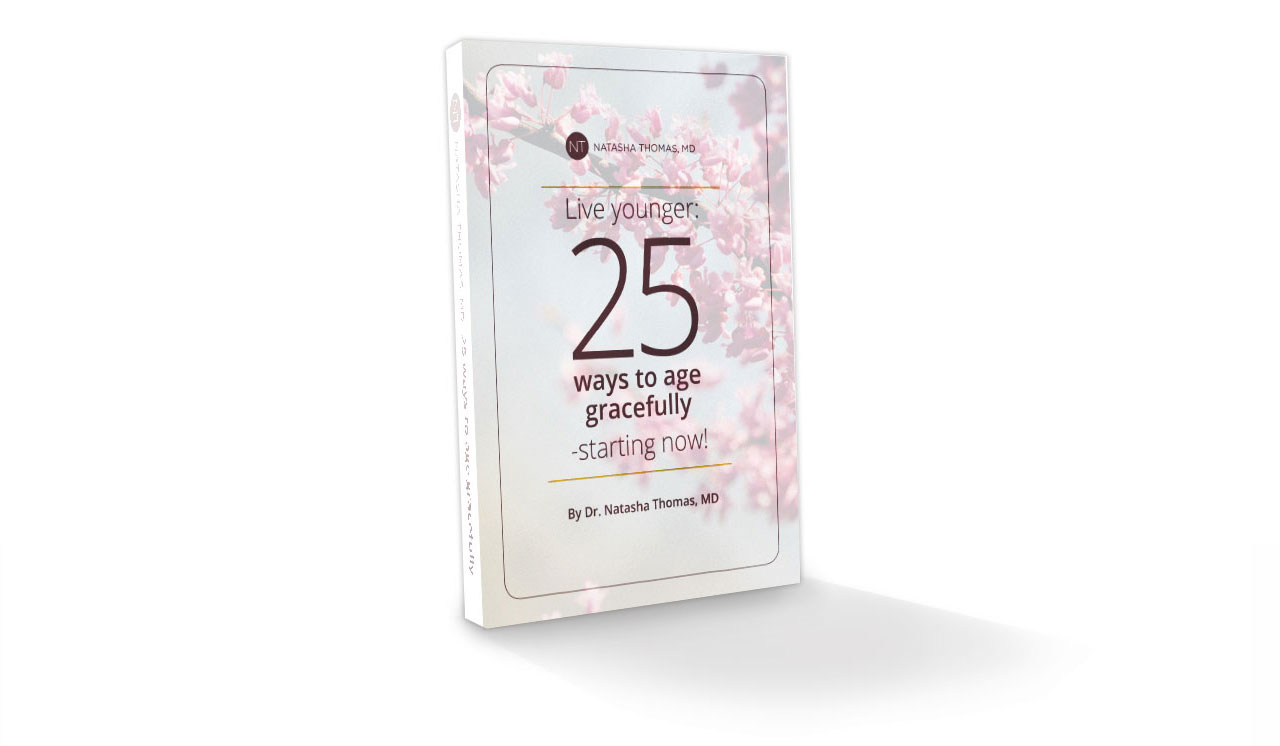Posted on: March 7, 2019
Think of the shape of a butterfly. That’s similar to the shape of your thyroid gland, located in your neck, just below your larynx, also known as the voice box and characterized by your Adam’s apple.
Butterflies, though beautiful, seem so small and fragile. Yet, butterflies are important pollinators in nature. Likewise, the thyroid gland may be small in relationship to the body, but it plays a tremendous role.
Thyroid Biology 101
How is the thyroid supposed to function?
The pituitary (master) gland in the brain sends a signal known as thyroid stimulating hormone (TSH) to the thyroid gland. When the thyroid receives the TSH message, it produces T4 (thyroxine), the gland’s primary hormone. The liver and other tissues convert most of that T4 to a more active form, T3 (triiodothyronine).

As we age, T4 converts more often to Reverse T3, which is metabolically inactive – it can’t do its intended job.
Worse, your body’s receptor sites become more resistant to T3 with age.
More women than men suffer from an under-active thyroid function (hypothyroidism), and it’s also very common in the elderly.
Take the Hormone Quiz
Hypothyroidism and Inflammation
When thyroid function goes down, inflammation markers in the body go up. This is a problem because high inflammation is a precursor to almost every disease. Perhaps that’s why we now see a pandemic of chronic disease: Experts estimate that 15% – 40% of the population suffers from an under-active thyroid!
Hypothyroidism is rampant today for many reasons:
- Lack of iodine and other important nutrients
- Stress
- Radiation – widespread exposure to radiation through wireless devices and cell phones
- Candida overgrowth – a yeast-like fungus that can cause many symptoms
- Environmental toxins and heavy metals in the air, food, water, cosmetics and body care products, dentistry, cigarette smoke, and household items
- Certain drugs inhibit thyroid function, such as salicylate (i.e., aspirin), non-steroidal anti-inflammatory drugs (NSAIDs), and many more common medications
- Fluoride and chlorine in municipal water systems (and the fluoride in toothpastes)
- Some foods may suppress thyroid function
- Congenital defects, genetic disorders, hormonal imbalances, and tumors
The fragile thyroid gland, struggling to do its job in a frequently toxic environment, often needs support. Here’s an example of how that small butterfly-shaped gland affected one patient.

Enjoying this article?
Subscribe + don’t miss the next one!
We’ll also send you our e-book: Live Younger 25 Ways to Age Gracefully—Starting Now.
Hannah’s Hashimoto’s
Hannah* came to me when she was in her 50’s. She had been diagnosed with hypothyroidism 20 years earlier after the birth of her daughter.
Her conventionally trained medical doctor had checked her TSH levels then and put her on a synthetic thyroid hormone replacement therapy (HRT).
Everything seemed to be fine for 20 years, but then she knew something wasn’t right. For no reason, she was gaining weight, had deep fatigue, depression, and very dry skin. She asked her doctor to increase her dose of synthetic thyroid. He wouldn’t because her TSH was within normal range.
She came to me in desperation to see if I could figure out what was going on. What was making her feel so bad after 20 years of feeling as if her prescription worked fine — why wasn’t it fine anymore?
After my complete workup, I discovered why. Her body’s immune system was attacking her thyroid gland – otherwise known as the autoimmune disease, Hashimoto’s.
My complete panel of tests doesn’t just check TSH levels – I check free-T3 and free-T4. Hannah’s antibodies were elevated and she had low free-T3. Her prescription hormone replacement (Synthroid) was T4, which the body is supposed to convert into T3. However, if the body can’t convert it, deficiency results, as it did in Hannah’s case.
Hannah was ready to make the dietary and lifestyle changes to help herself.

I added Cytomel for T3 support. In addition, we balanced her gut health, added nutrients she was deficient in, and optimized her sex hormones with bioidentical hormones (BHRT), which the body can recognize and utilize.
As I explained in a previous blog, there are definite advantages of BHRT versus synthetic HRT.
Her story has a happy ending: Hannah no longer has Hashimoto’s disease.
How can you tell if your thyroid is low?
Common symptoms of an under-active thyroid include:
- Fatigue and morning grogginess
- Low resting basal temperature (below 98.6 degrees)
- Hair loss
- Cold extremities
- Constipation
- Depression and mood swings
- Weight gain
- Dry skin, dry brittle hair
- Headaches
- High cholesterol
- Menstrual irregularities
- Goiter (swollen neck from enlarged thyroid gland)
Interesting, isn’t it, how so many of these symptoms are usually attributed to “just getting older”? It doesn’t have to be that way!
Enjoying this article? Subscribe + don’t miss the next one!
We’ll also send you our e-book: Live Younger 25 Ways to Age Gracefully—Starting Now.
What you can do if you suspect low thyroid
You can feel wonderful and look your best at any age. Take care of yourself – make your self-care a priority in your life. Set healthy boundaries and do all you can to reduce stress (because high cortisol negatively affects the thyroid, too). Make the time to eat a healthy diet, including drinking pure water (remember that chlorine and fluoride suppress the thyroid). And move your body – fitness plays a huge role in how you feel and how much circulation and energy your thyroid gets.
If you’ve got all that dialed in and you’re still not feeling well … or if you feel you just can’t deal with all that UNTIL you feel better, please schedule your complimentary consultation right now. I’d love to help you.
Schedule appointment now.
*Fictional name.

